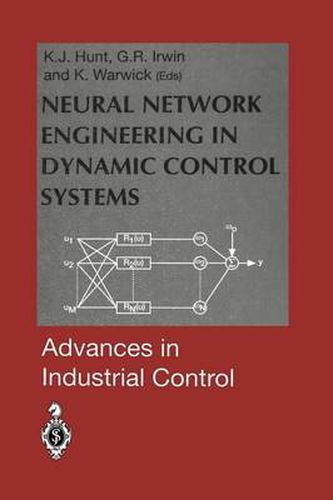Readings Newsletter
Become a Readings Member to make your shopping experience even easier.
Sign in or sign up for free!
You’re not far away from qualifying for FREE standard shipping within Australia
You’ve qualified for FREE standard shipping within Australia
The cart is loading…






This title is printed to order. This book may have been self-published. If so, we cannot guarantee the quality of the content. In the main most books will have gone through the editing process however some may not. We therefore suggest that you be aware of this before ordering this book. If in doubt check either the author or publisher’s details as we are unable to accept any returns unless they are faulty. Please contact us if you have any questions.
The series Advances in Industrial Control aims to report and encourage technology transfer in control engineering. The rapid development of control technology impacts all areas of the control discipline. New theory, new controllers, actuators, sensors, new industrial processes, computer methods, new applications, new philosophies, …. , new challenges. Much of this development work resides in industrial reports, feasibility study papers and the reports of advanced collaborative projects. The series offers an opportunity for researchers to present an extended exposition of such new work in all aspects of industrial control for wider and rapid dissemination. Within the control community there has been much discussion of and interest in the new Emerging Technologies and Methods. Neural networks along with Fuzzy Logic and Expert Systems is an emerging methodology which has the potential to contribute to the development of intelligent control technologies. This volume of some thirteen chapters edited by Kenneth Hunt, George Irwin and Kevin Warwick makes a useful contribution to the literature of neural network methods and applications. The chapters are arranged systematically progressing from theoretical foundations, through the training aspects of neural nets and concluding with four chapters of applications. The applications include problems as diverse as oven tempera ture control, and energy/load forecasting routines. We hope this interesting but balanced mix of material appeals to a wide range of readers from the theoretician to the industrial applications engineer.
$9.00 standard shipping within Australia
FREE standard shipping within Australia for orders over $100.00
Express & International shipping calculated at checkout
This title is printed to order. This book may have been self-published. If so, we cannot guarantee the quality of the content. In the main most books will have gone through the editing process however some may not. We therefore suggest that you be aware of this before ordering this book. If in doubt check either the author or publisher’s details as we are unable to accept any returns unless they are faulty. Please contact us if you have any questions.
The series Advances in Industrial Control aims to report and encourage technology transfer in control engineering. The rapid development of control technology impacts all areas of the control discipline. New theory, new controllers, actuators, sensors, new industrial processes, computer methods, new applications, new philosophies, …. , new challenges. Much of this development work resides in industrial reports, feasibility study papers and the reports of advanced collaborative projects. The series offers an opportunity for researchers to present an extended exposition of such new work in all aspects of industrial control for wider and rapid dissemination. Within the control community there has been much discussion of and interest in the new Emerging Technologies and Methods. Neural networks along with Fuzzy Logic and Expert Systems is an emerging methodology which has the potential to contribute to the development of intelligent control technologies. This volume of some thirteen chapters edited by Kenneth Hunt, George Irwin and Kevin Warwick makes a useful contribution to the literature of neural network methods and applications. The chapters are arranged systematically progressing from theoretical foundations, through the training aspects of neural nets and concluding with four chapters of applications. The applications include problems as diverse as oven tempera ture control, and energy/load forecasting routines. We hope this interesting but balanced mix of material appeals to a wide range of readers from the theoretician to the industrial applications engineer.